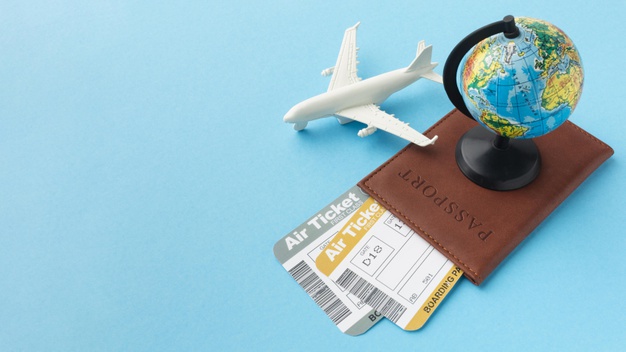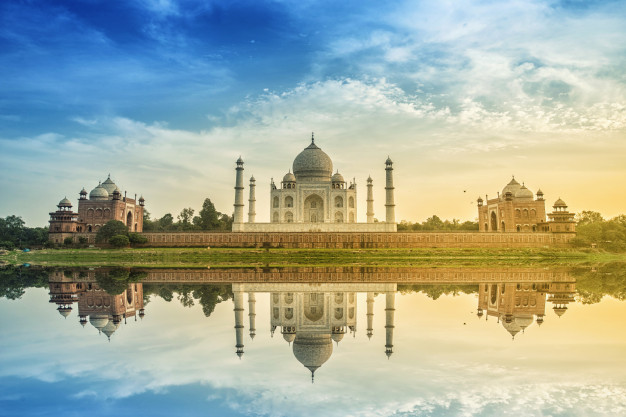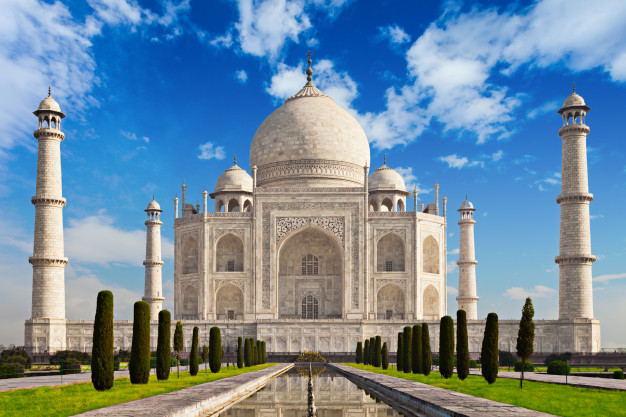One thing I repeat to all those who are about to make a trip to India is not to worry too much: you never get to India prepared for how much effort you can make, so if you have this destination in mind the only way to quench this thirst is to go and see for yourself.
Although you are never ready to face the heat, the proverbial insistence of the Indians, the convulsive traffic, and the often nauseating smells, I assure you that the reward is worth the trip and that the time has come to break the delay, not without some preliminary foresight.
This post aims to accompany you in the preparations and remove any doubts before departure. Why are you leaving, right? Come on India is unforgettable, you won’t regret it! But before traveling to India click here to check Air India’s flight schedule as it will help you to make better decisions.
What You Should Know Before Travelling To India?
Here we are10 ideas to think about before a trip to India. If you have any further doubts, do not hesitate to ask me.
Table of Contents
1. Be Convinced

Source: freepik.com
It may seem obvious, but are you really convinced that India is for you? In India, there is everything a traveler could want, from luxurious 5-star hotels to hostels for two dollars a night (bed bugs included in the price!), But what you will not find there is the belief that it is the right choice for you.
If you are hypersensitive, impressionable, weak of stomach, of poor health, and with newborns in tow, I advise you not to undertake this demanding journey from several points of view.
If you decide that it is for you, however, targeted reading about this country, from books to travel blogs and the experiences of those who have been there before you could help.
2. Buy airline tickets and travel insurance
The first thing to do, especially if you want to save money, is to buy airline tickets and travel insurance in advance. From Italy there are different solutions to fly to India, I have chosen the shortest from Milan to Delhi without a stopover, but there are various solutions and with different prices.
In my case, it took me between 8 and 9 hours to fly there and the impact in Delhi is immediately unsettling: between the humid heat and the traffic around the airport, it was immediately a good taste of India!
I also recommend that you take out travel insurance: it is always better to be cautious in these cases.
3. Apply for a visa

Source: freepik.com
An operation to be done as soon as possible and in advance (calculate two months to be safe) is the procedure to obtain an Indian visa.
Since it is not as simple as it seems and, moreover, you do not leave at all if you do not show up at the airport with a visa, it is good to have the procedure cleared immediately.
To enter India you need a passport valid for at least six months and a tourist entry visa to be obtained directly at the Indian Embassy in Rome, at the Indian Consulate in Milan or, if you live far from these cities, through an agency of consular practices.
The documents required for the practice are, in addition to the passport valid for at least six months and three free pages, also two passport photos with a white background of 50mm x 50mm and the Application Form duly completed in its five-question screens.
The visa you are going to apply for must be valid for 6 months and multiple entries. With these documents, you can go to the Embassy or send everything to an agency that will take care of the practice. Then all that remains is to wait for the visa.
4. Decide the travel itinerary
India is endless and, unless you have a lifetime to dedicate to it, you will have to make some itinerary choices before leaving.
First, you have to choose whether to go south or north, then decide which region to focus on and finally which cities to visit. India is diverse and very different from north to south, so it’s a substantial choice.
I advise you to have a rough itinerary in order to know how to get around and to inform yourself not so much about the kilometers that separate the various locations, but rather about the travel times.
The roads, in fact, are often bumpy and this is information that you can ask local agencies: I relied on one of them and they helped me to design the itinerary without exceeding the daily kilometers to grind.
5. Vaccines

Source: freepik.com
When it comes to medical matters, the most sensible advice I can give you is to consult your doctor. But I can tell you from my experience that there are no mandatory vaccines for India (or at least for the part I visited: Rajasthan, Agra, and Varanasi) and I left without vaccines.
6. Health measures
If I did not get vaccinated it does not mean that I was not careful: as with every trip I used common sense and some health precautions that made the trip more pleasant, for example
drinking a lot and only water from bottles, a daily dose of lactic ferments, no excessive temperature changes, and food that at least partially respected the cleaning standards!
7. Money and cost of living

Source: freepik.com
For this trip, I brought some cash to be exchanged on the spot with rupees, and for this operation, I trusted the suggestions of the Indians I was asking. Usually, this service is also performed by hotel reception but at a less advantageous exchange rate.
The cost of living can be as low as it is expensive, it all depends on the level you choose. In the places very frequented by tourists and in the shops recommended by the guides, the prices are almost comparable to those in Europe and there is no advantage in buying, while if you go to look for shops and restaurants in more remote places you pay low figures.
8. Bargain
We are not so used to it, yet the only way to do business in India is to bargain. Each price is presented very high and it is up to us to bring it down, even putting up real dramas! And even if at some point you decide that the bargaining was not successful and you try to leave there will be some shopkeeper who will do everything to convince you to buy something!
Bargaining can get really nerve-wracking at times, but it’s your right not to be persuaded to buy items that you absolutely don’t need.
9. In Temples

Source: freepik.com
Indians have a deep attachment to religion and those who profess Hinduism go to the temple every day to pray and make daily offerings. Anyone can enter Hindu and Jain temples but as long as local customs are respected as they should be.
So you must enter barefoot, leaving your shoes outside the entrance or on the special shelves (and then remember to give a small tip to those who have kept them) and you must not wear anything in leather.
In some temples, there is a restriction on entry even for women with menstruation.
10. Be Patient
India is a wonderful experience but, like any conquest, you have to climb the mountain with difficulty to have an unforgettable view. This is why I would like to advise you to have a lot of patience and not to lose your temper if some episodes seem incomprehensible to you.
If the heat and traffic seem hell to you and if at times there will be problems of incommunicability with the Indians. India was a dream before leaving and it still is now … I hope it will have the same effect on you too!

